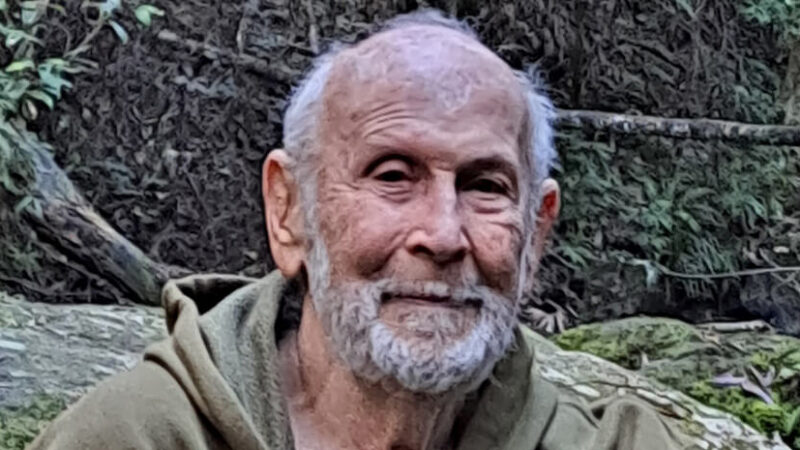-
E117: The Real Work: Letting Go from Within
Michael Singer — October 2, 2025
True spirituality isn’t about mystical experiences or lofty ideals—it’s about honestly facing...
-
Once More: Reflections on Reincarnation and the Gap Between Lives
Tami Simon — September 26, 2025
In this special reflection episode of Insights at the Edge host Tami Simon looks back on her...
-
Honey Tasting Meditation: Build Your Relationship with Sweetness
There is a saying that goes “hurt people hurt people.” I believe this to be true. We have been...
Written by:
Amy Burtaine, Michelle Cassandra Johnson
-
Many Voices, One Journey
The Sounds True Blog
Insights, reflections, and practices from Sounds True teachers, authors, staff, and more. Have a look—to find some inspiration and wisdom for uplifting your day.
Standing Together, and Stepping Up
Written By:
Tami Simon -
The Michael Singer Podcast
Your Highest Intention: Self-Realization
Michael Singer discusses intention—"perhaps the deepest thing we can talk about"—and the path to self-realization.
This Week:
E116: Doing the Best You Can: The Path to Liberation -
Many Voices, One Journey
The Sounds True Blog
Insights, reflections, and practices from Sounds True teachers, authors, staff, and more. Have a look—to find some inspiration and wisdom for uplifting your day.
Take Your Inner Child on Playdates
Written By:
Megan Sherer
600 Podcasts and Counting...
Subscribe to Insights at the Edge to hear all of Tami's interviews (transcripts available, too!), featuring Eckhart Tolle, Caroline Myss, Tara Brach, Jack Kornfield, Adyashanti, and many more.
Most Recent
E10: Overcoming Lower Vibrations and Embracing Spiritu...
Human consciousness is often distracted by lower vibrations like fear and insecurity, which prevent us from experiencing higher energies such as love and joy. Spiritual growth is a constant process of learning to handle reality’s vibrations without being pulled down. By mastering how we react to reality, we can experience higher states of being and, ultimately, serve others through love and compassion.
For more information, go to michaelsingerpodcast.com.
© Sounds True Inc. Episodes: © 2024 Michael A. Singer. All Rights Reserved.
E9: Embracing Life as Your Teacher
The meaning of life is to experience divine ecstasy. How? By allowing consciousness to flow through all experiences without resistance. The problem is that we often get lost in our preferences, attachments, and aversions, which creates a false sense of self and leads to suffering. True spiritual growth involves letting go of past psychological blockages by facing life’s challenges without inner resistance. This means learning to use every moment as an opportunity for purification and self-realization—in essence, to use life as your guru.
For more information, go to michaelsingerpodcast.com.
© Sounds True Inc. Episodes: © 2024 Michael A. Singer. All Rights Reserved.
John Seed: A Cosmic Walk to Discover Your Ecological I...
After almost 50 years as one of the world’s leading environmental activists, John Seed has started to see an encouraging shift: “Caring about the Earth isn’t just for hippies and pagans,” he says. “More and more people are moving from having these ideas to exploring what we can do about them.” In this podcast, Tami Simon speaks with the founder of the Rainforest Information Centre and co-author of Think Like a Mountain about his ongoing commitment to serving as a tireless steward of our planet and all its inhabitants.
Give a listen to this inspiring conversation exploring: the illusion of separation underlying the environmental crisis; experiential ecology, or “the work that reconnects”; engaged Buddhism and activism as a spiritual practice; Joanna Macy’s renowned despair and empowerment work; waking up a culture in denial; transforming numbness into energy and action; creating a container for safely witnessing what’s going on; ceremony and bringing the sacred into our activism; the Council of All Beings practice; gratitude; a guided experience of “the cosmic walk”; Thomas Berry and the call for a creation story that unites us all; and more.
Note: This episode originally aired on Sounds True One, where these special episodes of Insights at the Edge are available to watch live on video and with exclusive access to Q&As with our guests. Learn more at join.soundstrue.com.
Customer Favorites
E34: The Stairway to Heaven: A Guide to Spiritual Grow...
Spiritual experiences are inspiring but very different from the permanent state of spiritual realization. Momentary highs are temporary because, afterward, our consciousness is still lost in our thoughts, emotions, and learned preferences, which continue to drive our reactions and struggles in life. Deep growth begins by realizing you are not your thoughts or emotions but the observer of them. The everyday commitment to inner work that releases past emotional blockages, fears, and preferences is how you climb the permanent stairway to heaven. The ultimate goal is transcending the ego and experiencing the eternal oneness of your existence.
For more information, go to michaelsingerpodcast.com.
© Sounds True Inc. Episodes: © 2024 Michael A. Singer. All Rights Reserved.
David Spiegel: Self-Hypnosis for Well-Being
The practice of hypnosis is considered by many people within and outside of the medical profession to be useless, dangerous, or both. Yet studies are showing how hypnosis offers us a reliable, remarkably powerful therapeutic tool for managing pain and stress, changing unwanted habits, improving sleep, and overcoming a broad range of health challenges.
In this podcast, Tami Simon speaks with author and psychiatrist Dr. David Spiegel to separate the facts from the fiction, exploring: hypnosis as a naturally occurring state of highly focused attention; letting go of our usual preconceptions about ourselves; cognitive flexibility (not “suggestibility”); Dionysians, Apollonians, and Odysseans—three categories of hypnotizability; the Spiegel eye-roll technique; a guided experience of self-hypnosis for stress and anxiety; hypnosis vs. meditation; respecting and protecting your body; focusing on what you’re for instead of what you’re against; and a case example using self-hypnosis to heal trauma and dissociation (please note: this example occurs at 39:10–41:03 and includes a reference to sexual assault).
Note: This episode originally aired on Sounds True One, where these special episodes of Insights at the Edge are available to watch live on video and with exclusive access to Q&As with our guests. Learn more at join.soundstrue.com.
David Whyte: Being at the Frontier of Your Identity
Tami Simon speaks with David Whyte, a passionate speaker, poet, and author of four Sounds True audio programs, including Clear Mind, Wild Heart and What to Remember When Waking: The Disciplines of an Everyday Life. In this rebroadcast of one of the most popular Insights at the Edge interviews, Tami speaks with David about how each of our lives unfolds as a great conversation with reality, which is the source of originality. David also shares some of his poetry, and explores how our innate sense of exile is actually a core human competency, how vulnerability enhances our perception, and what it might mean to tap into the invisible support that is always available to us. (61 minutes)






